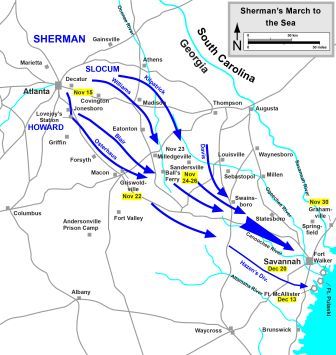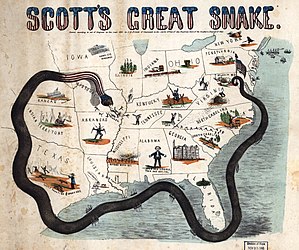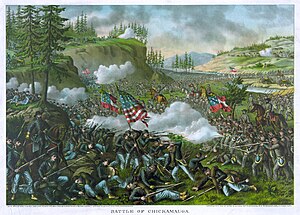 |
| http://www.wired.com/thisdayintech/2010/11/1115-sherman-march-to-sea/ |
The Atlanta campaign was the first out of 2 campaigns that
union general William t. Sherman commanded. His principle was to gain and
occupy Atlanta, due to Atlanta’s role as a major railroad hub of the south and
its industrial capabilities, in which would cause a significant loss for the
confederacy. Confederate general Joseph Johnston army was outnumbered 2 to 1 by
the union’s army. He then decided to use defensive tactics against Sherman to
at the very least try to slow down union soldiers. This defensive work ethic
was utilized as a distraction. Similarly, when you’re hiding something from
your parents, you do or say things to distract them. While Johnston hoped to
lure Sherman into costly head on attacks, Sherman would simply go around, or
out flank, the CSA’s position. He then continued to advance to what he really
wanted, Atlanta. By the time general Johnston would realize this, it would be
too late to attack on the union soldiers to they would have to withdrawal from
their defensive strongholds. Because he repeatedly had to withdrawal, allowing Sherman
and his men to get closer and closer to Atlanta untouched, he was replaced by a
more aggressive general, confederate general john b. hood. Hood was instructed
to take on Sherman’s army head on and protect the city of Atlanta, and he did
so as commanded. Even thought he put in his best effort to halt and stall the
union soldiers, he was unsuccessful, allowing Sherman to get close enough to Atlanta
to begin to bombard it with cannon fire. On September 2, 1864, General Hood was
forced to withdraw from Atlanta leaving the city open for Union occupation.
Sherman held the city for more than two months planning for what was to be
called The March to the Sea. On Nov 15, 1864, Sherman’s army left Atlanta. He left
Atlanta burning, ruining everything in his path. from







 http://www.tnhistoryforkids.org/places/dred_scott
http://www.tnhistoryforkids.org/places/dred_scott